 The Hidden Story of the Americans that Finished the Vietnam War
The Hidden Story of the Americans that Finished the Vietnam War(I considered excerpting part of the article, but really it's a good one so read the whole thing)
The Soldier’s Revolt
by Joel Geier
Our army that now remains in Vietnam is in a state approaching collapse, with individual units avoiding or having refused combat, murdering their officers and noncommissioned officers, drug-ridden, and dispirited where not near-mutinous Conditions exist among American forces in Vietnam that have only been exceeded in this century by…the collapse of the Tsarist armies in 1916 and 1917.
- Armed Forces Journal, June 1971
The most neglected aspect of the Vietnam War is the soldiers’ revolt–the mass upheaval from below that unraveled the American army. It is a great reality check in an era when the U.S. touts itself as an invincible nation. For this reason, the soldiers’ revolt has been written out of official history.
The army revolt pitted enlisted soldiers against officers who viewed them as expendable. Liberal academics have reduced the radicalism of the 1960s to middle-class concerns and activities, while ignoring military rebellion. But the militancy of the 1960s began with the Black liberation struggle, and it reached its climax with the unity of White and Black soldiers.
A working-class army
From 1964 to 1973, from the Gulf of Tonkin resolution to the final withdrawal of U.S. troops from Vietnam, 27 million men came of draft age. A majority of them were not drafted due to college, professional, medical or National Guard deferments. Only 40 percent were drafted and saw military service. A small minority, 2.5 million men (about 10 percent of those eligible for the draft), were sent to Vietnam.
This small minority was almost entirely working-class or rural youth. Their average age was 19. Eighty-five percent of the troops were enlisted men; 15 percent were officers. The enlisted men were drawn from the 80 percent of the armed forces with a high school education or less. At this time, college education was universal in the middle class.
In the elite colleges, the class discrepancy was even more glaring. The upper class did none of the fighting. Of the 1,200 Harvard graduates in 1970, only 2 went to Vietnam, while working-class high schools routinely sent 20 percent, 30 percent of their graduates and more to Vietnam.
College students who were not made officers were usually assigned to noncombat support and service units. High school dropouts were three times more likely to be sent to combat units that did the fighting and took the casualties. Combat infantry soldiers, “the grunts,” were entirely working class. They included a disproportionate number of Black working-class troops. Blacks, who formed 12 percent of the troops, were often 25 percent or more of the combat units.
When college deferments expired, joining the National Guard was a favorite way to get out of serving in Vietnam. During the war, 80 percent of the Guard’s members described themselves as joining to avoid the draft. You needed connections to get in–which was no problem for Dan Quayle, George W. Bush and other draft evaders. In 1968, the Guard had a waiting list of more than 100,000. It had triple the percentage of college graduates that the army did. Blacks made up less than 1.5 percent of the National Guard. In Mississippi, Blacks were 42 percent of the population, but only one Black man served in a Guard of more than 10,000.
The middle-class officers corps
The officer corps was drawn from the 7 percent of troops who were college graduates, or the 13 percent who had one to three years of college. College was to officer as high school was to enlisted man. The officer corps was middle class in composition and managerial in outlook.
Superfluous support officers lived far removed from danger, lounging in rear base camps in luxurious conditions. A few miles away, combat soldiers were experiencing a nightmarish hell. The contrast was too great to allow for confidence–in both the officers and the war–to survive unscathed.
Westmoreland’s solution to the competition for combat command poured gasoline on the fire. He ordered a one-year tour of duty for enlisted men in Vietnam, but only six months for officers. The combat troops hated the class discrimination that put them at twice the risk of their commanders. They grew contemptuous of the officers, whom they saw as raw and dangerously inexperienced in battle.
Even a majority of officers considered Westmoreland’s tour inequality as unethical. Yet they were forced to use short tours to prove themselves for promotion. They were put in situations in which their whole careers depended on what they could accomplish in a brief period, even if it meant taking shortcuts and risks at the expense of the safety of their men–a temptation many could not resist.
The outer limit of six-month commands was often shortened due to promotion, relief, injury or other reasons. The outcome was “revolving-door” commands. As an enlisted man recalled, “During my year in-country I had five second-lieutenant platoon leaders and four company commanders. One CO was pretty good…All the rest were stupid.”
Aggravating this was the contradiction that guaranteed opposition between officers and men in combat. Officer promotions depended on quotas of enemy dead from search-and-destroy missions. Battalion commanders who did not furnish immediate high body counts were threatened with replacement. This was no idle threat–battalion commanders had a 30 to 50 percent chance of being relieved of command. But search-and-destroy missions produced enormous casualties for the infantry soldiers. Officers corrupted by career ambitions would cynically ignore this and draw on the never-ending supply of replacements from the monthly draft quota.
Officer corruption was rife. A Pentagon official writes, “the stench of corruption rose to unprecedented levels during William C. Westmoreland’s command of the American effort in Vietnam.” The CIA protected the poppy fields of Vietnamese officials and flew their heroin out of the country on Air America planes. Officers took notice and followed suit. The major who flew the U.S. ambassador’s private jet was caught smuggling $8 million of heroin on the plane.
The war was fought by NLF troops and peasant auxiliaries who worked the land during the day and fought as soldiers at night. They would attack ARVN (Army of the Republic of Vietnam) and American troops and bases or set mines at night, and then disappear back into the countryside during the day. In this form of guerrilla war, there were no fixed targets, no set battlegrounds, and there was no territory to take. With that in mind, the Pentagon designed a counterinsurgency strategy called “search and destroy.” Without fixed battlegrounds, combat success was judged by the number of NLF troops killed–the body count. A somewhat more sophisticated variant was the “kill ratio”–the number of enemy troops killed compared to the number of Americans dead. This “war of attrition” strategy was the basic military plan of the American ruling class in Vietnam.
For each enemy killed, for every body counted, soldiers got three-day passes and officers received medals and promotions. This reduced the war from fighting for “the hearts and minds of the Vietnamese” to no larger purpose than killing. Any Vietnamese killed was put in the body count as a dead enemy soldier, or as the GIs put it, “if it’s dead, it’s Charlie” (“Charlie” was GI slang for the NLF). This was an inevitable outcome of a war against a whole people. Everyone in Vietnam became the enemy–and this encouraged random slaughter. Officers further ordered their men to “kill them even if they try to surrender–we need the body count.” It was an invitation to kill indiscriminately to swell a tally sheet.
Rather than following their officers, many more soldiers had the courage to revolt against barbarism.
Ninety-five percent of combat units were search-and-destroy units. Their mission was to go out into the jungle, hit bases and supply areas, flush out NLF troops and engage them in battle. If the NLF fought back, helicopters would fly in to prevent retreat and unleash massive firepower–bullets, bombs, missiles. The NLF would attempt to avoid this, and battle generally only occurred if the search-and-destroy missions were ambushed. Ground troops became the live bait for the ambush and firefight. GIs referred to search and destroy as “humping the boonies by dangling the bait.”
Without helicopters, search and destroy would not have been possible–and the helicopters were the terrain of the officers. “On board the command and control chopper rode the battalion commander, his aviation-support commander, the artillery-liaison officer, the battalion S-3 and the battalion sergeant major. They circled…high enough to escape random small-arms fire.” The officers directed their firepower on the NLF down below, but while indiscriminately spewing out bombs and napalm, they could not avoid “collateral damage”–hitting their own troops. One-quarter of the American dead in Vietnam was killed by “friendly fire” from the choppers. The officers were out of danger, the “eye in the sky,” while the troops had their “asses in the grass,” open to fire from both the NLF and the choppers.
When the battle was over, the officers and their choppers would fly off to base camps removed from danger while their troops remained out in the field.
Of the 543,000 American troops in Vietnam in 1968, only 14 percent (or 80,000) were combat troops. These 80,000 men took the brunt of the war. They were the weak link, and their disaffection crippled the ability of the world’s largest military to fight. In 1968, 14,592 men–18 percent of combat troops–were killed. An additional 35,000 had serious wounds that required hospitalization. Although not all of the dead and wounded were from combat units, the overwhelming majority were. The majority of combat troops in 1968 were either seriously injured or killed. The number of American casualties in Vietnam was not extreme, but as it was concentrated among the combat troops, it was a virtual massacre. Not to revolt amounted to suicide.
Officers, high in the sky, had few deaths or casualties. The deaths of officers occurred mostly in the lower ranks among lieutenants or captains who led combat platoons or companies. The higher-ranking officers went unharmed. During a decade of war, only one general and eight full colonels died from enemy fire. As one study commissioned by the military concluded, “In Vietnam…the officer corps simply did not die in sufficient numbers or in the presence of their men often enough.”
The slaughter of grunts went on because the officers never found it unacceptable. There was no outcry from the military or political elite, the media or their ruling-class patrons about this aspect of the war, nor is it commented on in almost any history of the war. It is ignored or accepted as a normal part of an unequal world, because the middle and upper class were not in combat in Vietnam and suffered no pain from its butchery. It never would have been tolerated had their class done the fighting. Their premeditated murder of combat troops unleashed class war in the armed forces. The revolt focused on ending search and destroy through all of the means the army had provided as training for these young workers.
Tet–the revolt begins
The Tet Offensive was the turning point of the Vietnam War and the start of open, active soldiers’ rebellion. At the end of January 1968, on Tet, the Vietnamese New Year, the NLF sent 100,000 troops into Saigon and 36 provincial capitals to lead a struggle for the cities. The Tet Offensive was not militarily successful, because of the savagery of the U.S. counterattack. In Saigon alone, American bombs killed 14,000 civilians. The city of Ben Tre became emblematic of the U.S. effort when the major who retook it announced that “to save the city, we had to destroy it.”
Westmoreland and his generals claimed that they were the victors of Tet because they had inflicted so many casualties on the NLF. But to the world, it was clear that the U.S. had politically lost the war in Vietnam. Tet showed that the NLF had the overwhelming support of the Vietnamese population–millions knew of and collaborated with the NLF entry into the cities and no one warned the Americans. The ARVN had turned over whole cities without firing a shot. In some cases, ARVN troops had welcomed the NLF and turned over large weapons supplies. The official rationale for the war, that U.S. troops were there to help the Vietnamese fend off Communist aggression from the North, was no longer believed by anybody. The South Vietnamese government and military were clearly hated by the people.37
Westmoreland’s constant claim that there was “light at the end of the tunnel,” that victory was imminent, was shown to be a lie. Search and destroy was a pipe dream. The NLF did not have to be flushed out of the jungle, it operated everywhere. No place in Vietnam was a safe base for American soldiers when the NLF so decided.
What, then, was the point of this war? Why should American troops fight to defend a regime its own people despised? Soldiers became furious at a government and an officer corps who risked their lives for lies. Throughout the world, Tet and the confidence that American imperialism was weak and would be defeated produced a massive, radical upsurge that makes 1968 famous as the year of revolutionary hope. In the U.S. army, it became the start of the showdown with the officers.
Mutiny
The refusal of an order to advance into combat is an act of mutiny. In time of war, it is the gravest crime in the military code, punishable by death. In Vietnam, mutiny was rampant, the power to punish withered and discipline collapsed as search and destroy was revoked from below.
Until 1967, open defiance of orders was rare and harshly repressed, with sentences of two to ten years for minor infractions. Hostility to search-and-destroy missions took the form of covert combat avoidance, called “sandbagging” by the grunts. A platoon sent out to “hump the boonies” might look for a safe cover from which to file fabricated reports of imaginary activity.
But after Tet, there was a massive shift from combat avoidance to mutiny. One Pentagon official reflected that “mutiny became so common that the army was forced to disguise its frequency by talking instead of ‘combat refusal.’” Combat refusal, one commentator observed, “resembled a strike and occurred when GIs refused, disobeyed, or negotiated an order into combat.”
Acts of mutiny took place on a scale previously only encountered in revolutions. The first mutinies in 1968 were unit and platoon-level rejections of the order to fight. The army recorded 68 such mutinies that year. By 1970, in the 1st Air Cavalry Division alone, there were 35 acts of combat refusal. One military study concluded that combat refusal was “unlike mutinous outbreaks of the past, which were usually sporadic, short-lived events. The progressive unwillingness of American soldiers to fight to the point of open disobedience took place over a four-year period between 1968-71.”
The 1968 combat refusals of individual units expanded to involve whole companies by the next year. The first reported mass mutiny was in the 196th Light Brigade in August 1969. Company A of the 3rd Battalion, down to 60 men from its original 150, had been pushing through Songchang Valley under heavy fire for five days when it refused an order to advance down a perilous mountain slope. Word of the mutiny spread rapidly. The New York Daily News ran a banner headline, “Sir, My Men Refuse To Go.” The GI paper, The Bond, accurately noted, “It was an organized strike…A shaken brass relieved the company commander…but they did not charge the guys with anything. The Brass surrendered to the strength of the organized men.”
This precedent–no court-martial for refusing to obey the order to fight, but the line officer relieved of his command–was the pattern for the rest of the war. Mass insubordination was not punished by an officer corps that lived in fear of its own men. Even the threat of punishment often backfired. In one famous incident, B Company of the 1st Battalion of the 12th Infantry refused an order to proceed into NLF-held territory. When they were threatened with court-martials, other platoons rallied to their support and refused orders to advance until the army backed down.
As the fear of punishment faded, mutinies mushroomed. There were at least ten reported major mutinies, and hundreds of smaller ones. Hanoi’s Vietnam Courier documented 15 important GI rebellions in 1969. At Cu Chi, troops from the 2nd Battalion of the 27th Infantry refused battle orders. The “CBS Evening News” broadcast live a patrol from the 7th Cavalry telling their captain that his order for direct advance against the NLF was nonsense, that it would threaten casualties, and that they would not obey it. Another CBS broadcast televised the mutiny of a rifle company of the 1st Air Cavalry Division.
When Cambodia was invaded in 1970, soldiers from Fire Base Washington conducted a sit-in. They told Up Against the Bulkhead, “We have no business there…we just sat down. Then they promised us we wouldn’t have to go to Cambodia.” Within a week, there were two additional mutinies, as men from the 4th and 8th Infantry refused to board helicopters to Cambodia.
In the invasion of Laos in March 1971, two platoons refused to advance. To prevent the mutiny from spreading, the entire squadron was pulled out of the Laos operation. The captain was relieved of his command, but there was no discipline against the men. When a lieutenant from the 501st Infantry refused his battalion commander’s order to advance his troops, he merely received a suspended sentence.
The decision not to punish men defying the most sacrosanct article of the military code, the disobedience of the order for combat, indicated how much the deterioration of discipline had eroded the power of the officers. The only punishment for most mutinies was to relieve the commanding officer of his duties. Consequently, many commanders would not report that they had lost control of their men. They swept news of mutiny, which would jeopardize their careers, under the rug. As they became quietly complicit, the officer corps lost any remaining moral authority to impose discipline.
For every defiance in combat, there were hundreds of minor acts of insubordination in rear base camps. As one infantry officer reported, “You can’t give orders and expect them to be obeyed.” This democratic upsurge from below was so extensive that discipline was replaced by a new command technique called working it out. Working it out was a form of collective bargaining in which negotiations went on between officers and men to determine orders. Working it out destroyed the authority of the officer corps and gutted the ability of the army to carry out search-and-destroy missions. But the army had no alternative strategy for a guerrilla war against a national liberation movement.
The political impact of the mutiny was felt far beyond Vietnam. As H.R. Haldeman, Nixon’s chief of staff, reflected, “If troops are going to mutiny, you can’t pursue an aggressive policy.” The soldiers’ revolt tied down the global reach of U.S. imperialism.
Fragging
The murder of American officers by their troops was an openly proclaimed goal in Vietnam. As one GI newspaper demanded, “Don’t desert. Go to Vietnam, and kill your commanding officer.” And they did. A new slang term arose to celebrate the execution of officers: fragging. The word came from the fragmentation grenade, which was the weapon of choice because the evidence was destroyed in the act.
In every war, troops kill officers whose incompetence or recklessness threatens the lives of their men. But only in Vietnam did this become pervasive in combat situations and widespread in rear base camps. It was the most well-known aspect of the class struggle inside the army, directed not just at intolerable officers, but at “lifers” as a class. In the soldiers’ revolt, it became accepted practice to paint political slogans on helmets. A popular helmet slogan summed up this mood: “Kill a non-com for Christ.” Fragging was the ransom the ground troops extracted for being used as live bait.
No one knows how many officers were fragged, but after Tet it became epidemic. At least 800 to 1,000 fragging attempts using explosive devices were made. The army reported 126 fraggings in 1969, 271 in 1970 and 333 in 1971, when they stopped keeping count. But in that year, just in the American Division (of My Lai fame), one fragging per week took place. Some military estimates are that fraggings occurred at five times the official rate, while officers of the Judge Advocate General Corps believed that only 10 percent of fraggings were reported. These figures do not include officers who were shot in the back by their men and listed as wounded or killed in action.
Most fraggings resulted in injuries, although “word of the deaths of officers will bring cheers at troop movies or in bivouacs of certain units.” The army admitted that it could not account for how 1,400 officers and noncommissioned officers died. This number, plus the official list of fragging deaths, has been accepted as the unacknowledged army estimate for officers killed by their men. It suggests that 20 to 25 percent–if not more–of all officers killed during the war were killed by enlisted men, not the “enemy.” This figure has no precedent in the history of war.
Soldiers put bounties on officers targeted for fragging. The money, usually between $100 and $1,000, was collected by subscription from among the enlisted men. It was a reward for the soldier who executed the collective decision. The highest bounty for an officer was $10,000, publicly offered by GI Says, a mimeographed bulletin put out in the 101st Airborne Division, for Col. W. Honeycutt, who had ordered the May 1969 attack on Hill 937. The hill had no strategic significance and was immediately abandoned when the battle ended. It became enshrined in GI folklore as Hamburger Hill, because of the 56 men killed and 420 wounded taking it. Despite several fragging attempts, Honeycutt escaped uninjured.
As Vietnam GI argued after Hamburger Hill, “Brass are calling this a tremendous victory. We call it a goddam butcher shop…If you want to die so some lifer can get a promotion, go right ahead. But if you think your life is worth something, you better get yourselves together. If you don’t take care of the lifers, they might damn well take care of you.”
Fraggings were occasionally called off. One lieutenant refused to obey an order to storm a hill during an operation in the Mekong Delta. “His first sergeant later told him that when his men heard him refuse that order, they removed a $350 bounty earlier placed on his head because they thought he was a ‘hard-liner.’”
The motive for most fraggings was not revenge, but to change battle conduct. For this reason, officers were usually warned prior to fraggings. First, a smoke grenade would be left near their beds. Those who did not respond would find a tear-gas grenade or a grenade pin on their bed as a gentle reminder. Finally, the lethal grenade was tossed into the bed of sleeping, inflexible officers. Officers understood the warnings and usually complied, becoming captive to the demands of their men. It was the most practical means of cracking army discipline. The units whose officers responded opted out of search-and-destroy missions.
An Army judge who presided over fragging trials called fragging “the troops’ way of controlling officers,” and added that it was “deadly effective.” He explained, “Captain Steinberg argues that once an officer is intimidated by even the threat of fragging he is useless to the military because he can no longer carry out orders essential to the functioning of the Army. Through intimidation by threats–verbal and written…virtually all officers and NCOs have to take into account the possibility of fragging before giving an order to the men under them.” The fear of fragging affected officers and NCOs far beyond those who were actually involved in fragging incidents.
Officers who survived fragging attempts could not tell which of their men had tried to murder them, or when the men might strike again. They lived in constant fear of future attempts at fragging by unknown soldiers. In Vietnam it was a truism that “everyone was the enemy”: for the lifers, every enlisted man was the enemy. “In parts of Vietnam fragging stirs more fear among officers and NCOs than does the war with ‘Charlie.’”
Counter-fragging by retaliating officers contributed to a war within the war. While 80 percent of fraggings were of officers and NCOs, 20 percent were of enlisted men, as officers sought to kill potential troublemakers or those whom they suspected of planning to frag them. In this civil war within the army, the military police were used to reinstate order. In October 1971, military police air assaulted the Praline mountain signal site to protect an officer who had been the target of repeated fragging attempts. The base was occupied for a week before command was restored.
Fragging undermined the ability of the Green Machine to function as a fighting force. By 1970, “many commanders no longer trusted Blacks or radical whites with weapons except on guard duty or in combat.” In the American Division, fragmentation grenades were not given to troops. In the 440 Signal Battalion, the colonel refused to distribute all arms. As a soldier at Cu Chi told the New York Times, “The American garrisons on the larger bases are virtually disarmed. The lifers have taken the weapons from us and put them under lock and key.” The U.S. army was slowly disarming its own men to prevent the weapons from being aimed at the main enemy: the lifers.
Peace from below–search and avoid
Mutiny and fraggings expressed the anger and bitterness that combat soldiers felt at being used as bait to kill Communists. It forced the troops to reassess who was the real enemy.
In a remarkable letter, 40 combat officers wrote to President Nixon in July 1970 to advise him that “the military, the leadership of this country–are perceived by many soldiers to be almost as much our enemy as the VC and the NVA.
After the 1970 invasion of Cambodia enlarged the war, fury and the demoralizing realization that nothing could stop the warmongers swept both the antiwar movement and the troops. The most popular helmet logo became “UUUU,” which meant “the unwilling, led by the unqualified, doing the unnecessary, for the ungrateful.” Peace, if it were to come, would have to be made by the troops themselves, instituted by an unofficial troop withdrawal ending search-and-destroy missions.
The form this peace from below took came to be called “search and avoid,” or “search and evade.” It became so extensive that “search and evade (meaning tacit avoidance of combat by units in the field) is now virtually a principle of war, vividly expressed by the GI phrase, ‘CYA’ (cover your ass) and get home!”
In search and avoid, patrols sent out into the field deliberately eluded potential clashes with the NLF. Night patrols, the most dangerous, would halt and take up positions a few yards beyond the defense perimeter, where the NLF would never come. By skirting potential conflicts, they hoped to make it clear to the NLF that their unit had established its own peace treaty.
Another frequent search-and-avoid tactic was to leave base camp, secure a safe area in the jungle and set up a perimeter-defense system in which to hole up for the time allotted for the mission. “Some units even took enemy weapons with them when they went out on such search-and-avoid missions so that upon return they could report a firefight and demonstrate evidence of enemy casualties for the body-count figures required by higher headquarters.”
The army was forced to accommodate what began to be called “the grunts’ cease-fire.” An American soldier from Cu Chi, quoted in the New York Times, said, “They have set up separate companies for men who refuse to go out into the field. It is no big thing to refuse to go. If a man is ordered to go to such and such a place, he no longer goes through the hassle of refusing; he just packs his shirt and goes to visit some buddies at another base camp.”
An observer at Pace, near the Cambodian front where a unilateral truce was widely enforced, reported, “The men agreed and passed the word to other platoons: nobody fires unless fired upon. As of about 1100 hours on October 10,1971, the men of Bravo Company, 11/12 First Cav Division, declared their own private cease-fire with the North Vietnamese.”
The NLF responded to the new situation. People’s Press, a GI paper, in its June 1971 issue claimed that NLF and NVA units were ordered not to open hostilities against U.S. troops wearing red bandanas or peace signs, unless first fired upon. Two months later, the first Vietnam veteran to visit Hanoi was given a copy of “an order to North Vietnamese troops not to shoot U.S. soldiers wearing antiwar symbols or carrying their rifles pointed down.” He reports its impact on “convincing me that I was on the side of the Vietnamese now.”
Colonel Heinl reported this:
That ’search-and-evade’ has not gone unnoticed by the enemy is underscored by the Viet Cong delegation’s recent statement at the Paris Peace Talks that Communist units in Indochina have been ordered not to engage American units which do not molest them. The same statement boasted–not without foundation in fact–that American defectors are in the VC ranks.
Some officers joined, or led their men, in the unofficial cease-fire from below. A U.S. army colonel claimed:
I had influence over an entire province. I put my men to work helping with the harvest. They put up buildings. Once the NVA understood what I was doing, they eased up. I’m talking to you about a de facto truce, you understand. The war stopped in most of the province. It’s the kind of history that doesn’t get recorded. Few people even know it happened, and no one will ever admit that it happened.
Search and avoid, mutiny and fraggings were a brilliant success. Two years into the soldiers’ upsurge, in 1970, the number of U.S. combat deaths were down by more than 70 percent (to 3,946) from the 1968 high of more than 14,000. The revolt of the soldiers in order to survive and not to allow themselves to be victims could only succeed by a struggle prepared to use any means necessary to achieve peace from below.
The army revolt had all of the strengths and weaknesses of the 1960s radicalization of which it was a part. It was a courageous mass struggle from below. It relied upon no one but itself to win its battles.
The only organizing tools were the underground GI newspapers. But newspapers became a substitute for organization.
The hidden history of the 1960s proves that the American army can be split. But that requires the long, slow patient work of explanation, of education, of organization, and of agitation and action. The Vietnam revolt shows how rank-and-file soldiers can rise to the task.
________________________________________________________________
As I looked up the source page of that article, I had to wonder - why is it that socialists can be so correct on war issues, that it absolutely is a machine that subverts the individual to the state - yet at the same time be such ardent defenders of awarding massive powers and controls to that self same state in the name of 'liberating' average people? That is the wonder of hypocrisy the socialist must swallow whole. I do not understand them.
As for war and the chickenhawks (for the most part) who preach that war X in country Y is necessary, and you must agree or you are unpatriotic and against the troops: Offensive wars end when soldiers realise they are being used, and mutiny. I'm not saying they roll a grenade next to their sleeping officer, just refuse to deploy. Uncomfortable but simple reality.
Here are the real modern War Heroes that definitely aren't appreciated enough:
Another Soldier Refuses Afghanistan Deployment
Veterans Group Calls on Soldiers to Refuse Orders to Deploy to Afghanistan and Iraq
Soldier Mom Refuses Deployment to Care for Baby
Right To Refuse?
Some may say that 'well they volunteered themselves to the service of their government, so they should have followed orders'. Why do you think the Army tries to recruit in schools? 'Cause they need people who still believe in the illusion of Fighting For Freedom And Democracy. These people may well have been simply young (read: naive) enough to sign up, then realised while serving that they were being used.
The Army - get shot at for some very rich people who don't mind one bit if you lose a limb or a head - in fact they consider it necessary for population control that there are lots of war dead. Wars are not started for 'freedom' or even for 'supremacy', at least in regards to one nation's supremacy - they are there to a) ensure the dominance of a handful of elites at the expense of everyone else; and b) to provide society with a strong enemy image, thus making the will of the masses much easier to mould to the liking of aforemtnioned elites.
Eugenics didn't go away, it's still with us today, it's hiding amongst aspects of Humanism, Darwinism, Social Darwinism, Socialism, Malthusianism, Environmentalism, Militarism and Globalisation.
“I do not pretend that birth control is the only way in which population can be kept from increasing… War… has hitherto been disappointing in this respect, but perhaps bacteriological war may prove more effective. If a Black Death could be spread throughout the world once in every generation survivors could procreate freely without making the world too full… The state of affairs might be somewhat unpleasant, but what of that? Really high-minded people are indifferent to happiness, especially other people’s… There are three ways of securing a society that shall be stable as regards population. The first is that of birth control, the second that of infanticide or really destructive wars, and the third that of general misery except for a powerful minority…”
- Bertrand Russell, THE IMPACT OF SCIENCE ON SOCIETY 1953
This is the true left and right - two sides of the same Nazi coin. Literally, 'Nazi', not just figuratively.



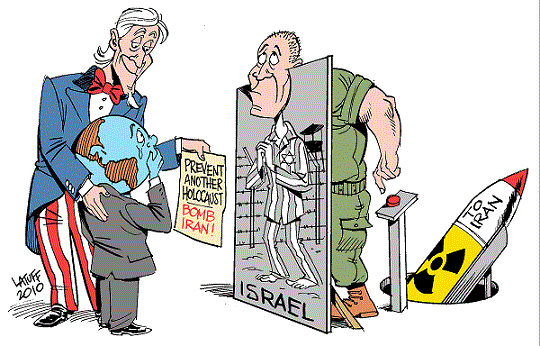














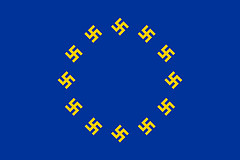

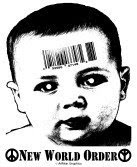




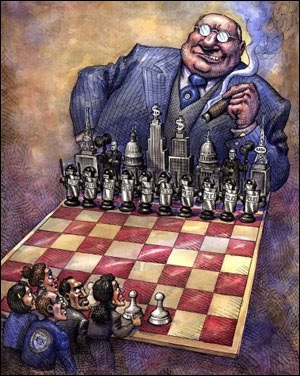







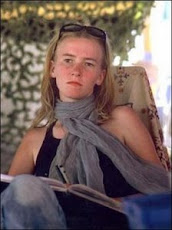

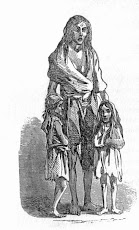
.jpg)

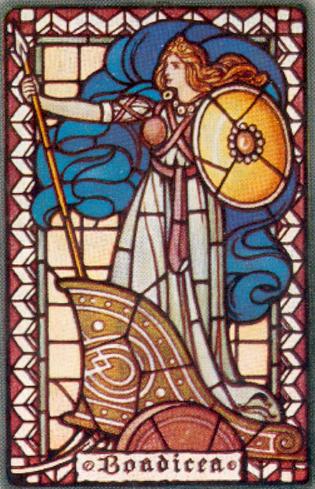

2 comments:
Adam the danger is an abandonement Dien Bien Phu style, not mutiny, because the US/UK are about to go broke. I reckon that is deliberate, could be wrong, but it has the smell of treason.
Well, that is definitely true. But in that case, all the more reason for the soldiers to make their own way back home and get revenge on the bastards that used them.
Post a Comment